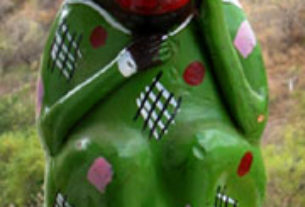In the darkest days of the Battle of Britain, Winston Churchill said of the RAF that “never has so much been owed by so many to so few.” To paraphrase the great statesman, it could be said of the Juan Rulfo’s literary output that never has such a small body of work been so widely acclaimed by so many.
Prolific, Rulfo was not. Between 1953 and 1980 he published one novel, a book of 17 short stories, and several film scripts, some of them based on his novel and short stories. Yet his work was so highly regarded that he won Mexico’s National Prize for Literature in 1970 and was elected to the Mexican Academy of Language in 1980. In 1985 he received the Premio Cervantes (“Cervantes Prize”) from Spain in recognition of his accomplishments.
Rulfo was born on May 16, 1917, in the village of San Gabriel, Jalisco, today Ciudad Venustiano Carranza. He had a grim childhood, witnessing as a little boy some of the more violent episodes of the 1926-29 Cristero religious war. His father died when he was six; his mother two years later. At age ten he was sent to an orphanage, where he remained the next four years.
Rulfo was a voracious reader his entire life, his interest in books sparked by an incident that took place when he was eight. Because of the bitter Church-State conflict that led to the Cristero (Catholic) rebellion, the local parish priest had entrusted his entire library to the young boy’s grandmother. Possessing an intense intellectual curiosity, Rulfo devoured every volume in the transplanted library.
At 16 Rulfo wanted to enroll at the University of Guadalajara. Frustrated by a prolonged student strike, he moved to Mexico City, where he lived the rest of his life. His grandfather was an attorney and wanted Rulfo to study law. But he failed the entrance exam and at the age of 18 went to work in the Immigration Department of the interior ministry. In a manner that recalls Dashiell Hammett’s stint as a private detective, Rulfo’s job was to track down foreigners suspected of illegal activity. Ironically, this seemingly unrelated activity helped him enormously with his writing. First working within the limits of the Federal District, then in Guadalajara and Tampico, then all over the country, he learned dialects, folkways and customs and was thus able to acquire the cultural insights that were to serve him so well in his writing.
In 1948, Rulfo married Clara Aparicio. In order to support his wife and their four children, he was compelled to toil at a number of occupations that didn’t involve writing. He was with the Immigration Service between 1935-1945, the Goodrich Tire Company between 1947-1953, the Paoaloapan Commission in 1955-1956, and the Indigenous Institute from 1962 until shortly before his death. Between 1959-1962 he was able to both write and earn a regular salary, being employed as a television producer and film scriptwriter.
Enrique Krauze, in his highly regarded “Mexico: A Biography of Power”, writes that the intensely committed young student revolutionaries of the 1960s were “dazzled by the mysterious and magical pages of Juan Rulfo, where the power and weight of authority in Mexico was carved into images of massive but also crumbling stone.” This “crumbling stone” (the breakdown of a semi-feudal society) is depicted throughout “Pedro Páramo,” his chillingly powerful sociological novel. Though published in that pre-counterculture year of 1955, the young sixties intellectuals and the more insightful critics perceived that they were encountering a new type of Latin American fiction. The novel’s daringly innovative structure, where narration is by dead inhabitants of the mythical village of Comalá, raises it from folklore to a roman noire level of reality. With an ear for dialogue that rivals John O’Hara, Rulfo makes the Mexican campesino come to life through expert re-creation of his speech.
Along with the Revolution, Rulfo — scarred by the Cristero War as a young boy — writes with uncompromising clarity about religion, the clergy and the cacique (regional boss) system that were such defining features of the rural Mexico of his youth. Rulfo was also an accomplished photographer. “Inframundo”, a collection of photographs, is as starkly evocative of the world he knew as his novel and short stories. The latter appeared as a collection in a work titled “El llano en llamas” (“The Burning Plain”).
Rulfo suffered from lung cancer toward the end of his life. On January 7, 1986, he died of a heart attack. Though his output may have been modest from a quantitative standpoint, few have ever questioned its quality. There are twenty-five editions of “Pedro Páramo” and more than a dozen for “El Ilano en llamas”. In addition, the novel has been translated into eighteen languages and the short story anthology into nine.

